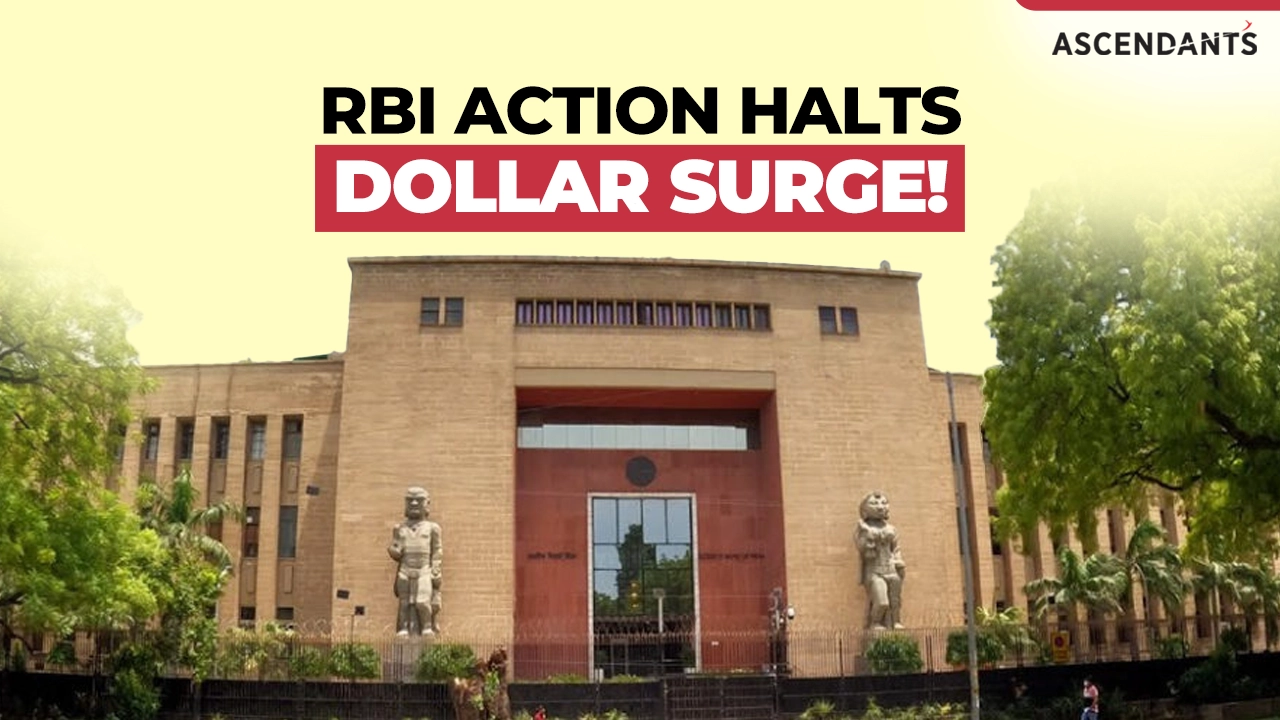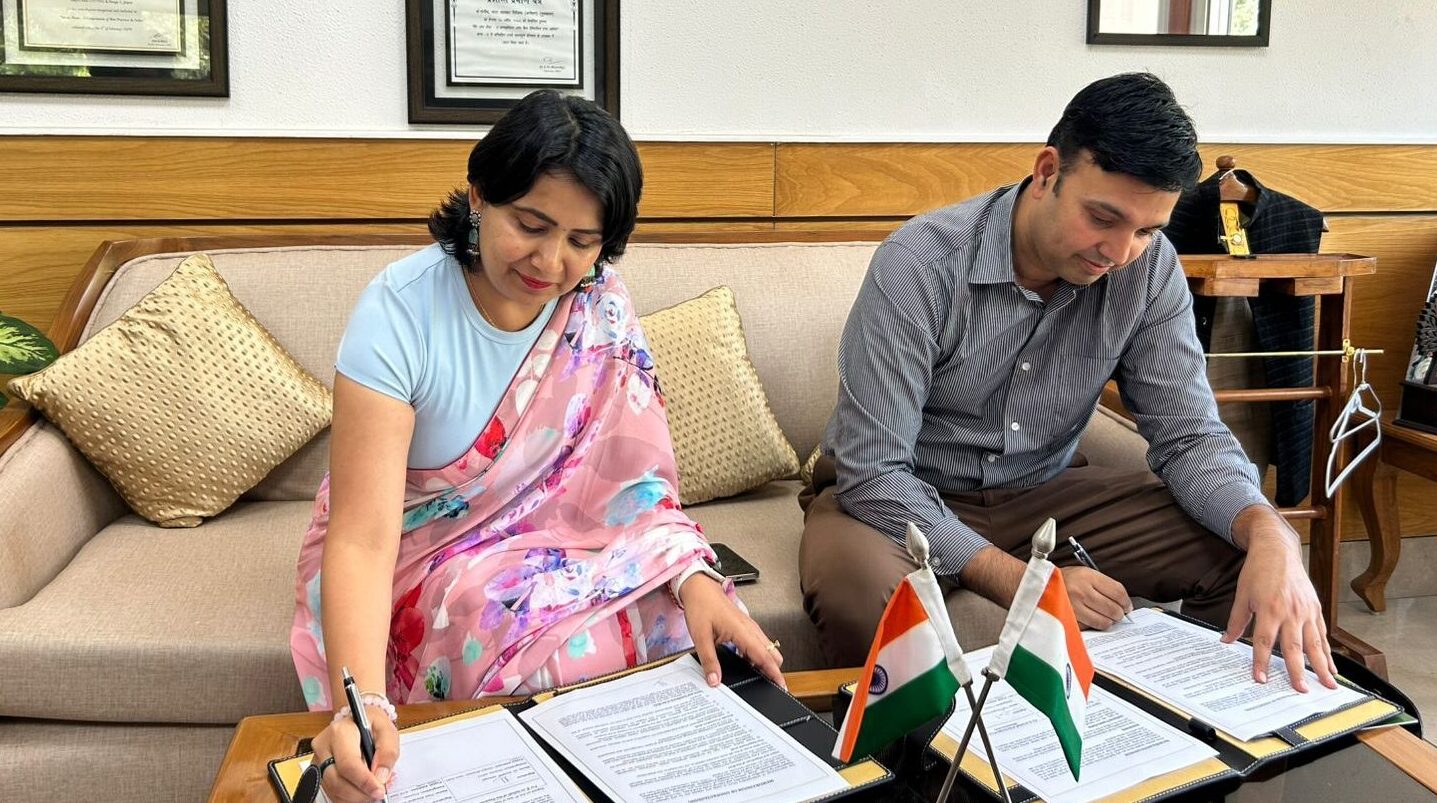The Indian Rupee recently approached the critical ₹88 per U.S. dollar mark, prompting the Reserve Bank of India (RBI) to stabilise the currency. To curb the slide, the RBI strictly sold dollars through government banks and engaged in currency swaps.
Amid concerns of the rupee breaching the critical ₹88 per dollar mark, the RBI took decisive action by offloading approximately USD 5.3 billion through state-run banks. In addition, the central bank executed swap operations valued at around USD 2.6 billion to boost liquidity in the market. This helped it rebound to roughly ₹86.69 per dollar.
Although the stock market today showed a negative sentiment overall, these steps were aimed at cushioning the market from further volatility, even as underlying global and domestic factors continued to exert pressure.
RBI Intervention: To Be or Not To Be
In contrast to the RBI’s hands-on approach demonstrated by this move, Finance Minister Nirmala Sitharaman has clearly stated that the rupee’s value is dictated by market dynamics, not by government intervention. “The value of the rupee is market-determined, and there is no specific target or band that we are trying to enforce,” she stated.
This contrasting statement and move, shows the current market volatility, and encourages caution to be exercised. With a raft of Executive Orders and policy decisions being taken by President Trump, market reactions have to be tailored to suit the situations.
Anticipating Key Modi-Trump Partnerships: There is a sense of cautious optimism amid these challenges. Prime Minister Narendra Modi is set to embark on his first visit to the United States since President Donald Trump’s re-election, a diplomatic trip that promises to alleviate some of the trade tensions.
This visit is likely to see discussions on ways to ease the strain on the rupee over the longer term and is expected to be a platform for addressing the tariff issues and streamlining bilateral trade.
Gold Prices & Market Instability: The steady climb in gold prices adds another layer to the current economic tableau. Investors and countries like China have been clutching onto gold as a safe haven amid the prevailing uncertainties, a trend that highlights broader market anxieties about global economic stability.
The rise in gold rates, added to currency and trade challenges, signals that the world may be on the brink of significant economic shifts.
Also Read: Repo Rate Cut: Calculate Your Reduced Home, Car, and Personal Loan EMI
Fiscal Policy 2025: Aiding India-US Partnerships
Looking ahead, the Indian government’s fiscal policies offer further hope for a reinvigorated U.S.-India trade relationship. In the Union Budget 2025, Finance Minister Sitharaman outlined a series of measures designed to boost economic ties with the United States.
Among these initiatives are plans to reduce tariffs on select imported goods, improve trade-related infrastructure, and implement reforms aimed at attracting greater foreign direct investment from U.S. companies.
Investor talks with Elon Musk for building a Tesla plant in India, which was started a few years ago, may also see the light of the day through this visit of PM Modi.
Expanding and diversifying India’s export portfolio to improve the Trade Deficit particularly in high-value sectors like technology and pharmaceuticals would not only help India mitigate the impact of tariff pressures but also promote innovation and growth.
Further, reducing bureaucratic obstacles while simplifying procedures within customs would facilitate trade logistics to be streamlined on both sides of the economic equation.
Finally, negotiating a comprehensive trade agreement that addresses any tariff barriers and non-tariff barriers would cement a more robust relationship that is mutually beneficial in terms of the economic relationship.
Key Trade Categories between India & U.S.A:
The following table summarizes the key trade categories between India and the United States:
| Category | India’s Exports to the US | India’s Imports from the US |
|---|---|---|
| Information Technology | Software services, IT outsourcing | Cloud computing, enterprise software (Microsoft, Oracle, AWS) |
| Pharmaceuticals | Generic drugs, vaccines, Active Pharmaceutical Ingredients (APIs) | Advanced medical equipment, patented drugs |
| Textiles & Apparel | Cotton garments, home textiles, footwear | Specialized fabrics, raw cotton |
| Gems & Jewelry | Cut & polished diamonds, gold jewelry | Raw diamonds, gold, silver |
| Automobiles & Parts | Auto components, motorcycles | Electric vehicles (Tesla), luxury cars |
| Machinery & Equipment | Engineering goods, light machinery | Heavy machinery, industrial equipment |
| Agricultural Products | Spices, rice, tea, processed food | Almonds, walnuts, apples, soybeans |
| Energy & Fuels | Refined petroleum, biofuels | Crude oil, LNG (liquefied natural gas) |
| Chemicals | Organic & inorganic chemicals | Specialty chemicals, plastics |
| Defense & Aerospace | Parts for aircraft, defense equipment | Fighter jets, missiles, avionics |
The Road Ahead
While the RBI has taken direct action to prevent the rupee from plunging further amid external pressures—such as U.S. tariffs and investor outflows—the Finance Ministry remains committed to a market-driven approach regarding currency valuation.
With Prime Minister Modi’s upcoming U.S. visit and a forward-looking Budget 2025 that emphasizes trade facilitation and investment, India appears ready to harness this pivotal moment.
Must Know: Jio Payment Solutions gains RBI approval

























